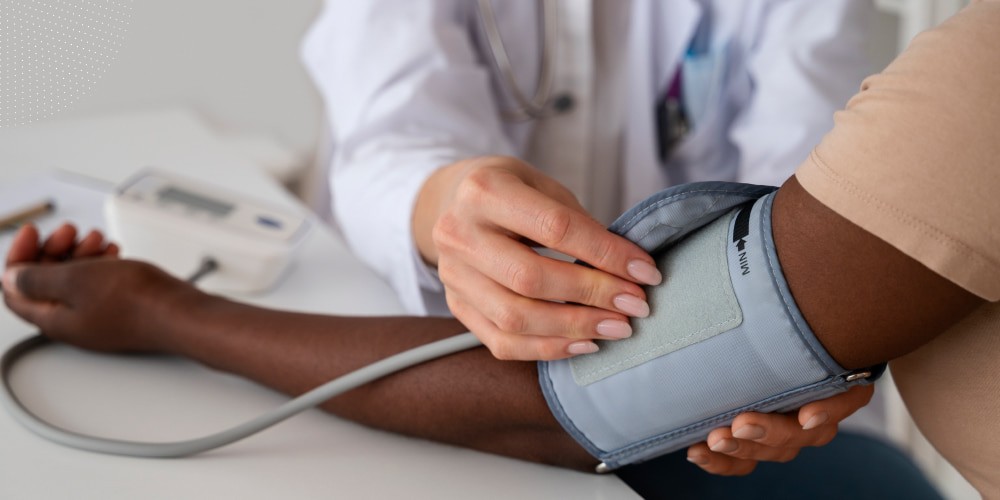The normal blood pressure is 120/80. This figure is optimal, although minor changes are possible. They depend on age and individual body characteristics. The pulse rate in the normal range is 85 heartbeats per minute.
Low blood pressure with a high pulse is pathological state of the body. It poses a danger to a person’s health. If a person has a high or low pulse on the background of low blood pressure, he should undergo a comprehensive examination. Since this often signalize serious health problems. Start with a visit to a general practitioner. After making an accurate diagnosis, the doctor will recommend what you need to do. So you can improve your well-being and treat the identified pathology.
If you wonder what can cause low blood pressure and high heart rate, you should definitely know the causes. It can happen against the background of:
- alcohol abuse;
- taking medications, including beta-blockers and diuretics;
- consumption of stimulants and coffee;
- insufficient physical activity.
This article will explore the possible causes. You will discover treatment options for high heart rates and low blood pressure.
Hypotension and Tachycardia Meaning
Hypotension refers to low blood pressure, like below 90/60 mmHg.
Tachycardia is a rapid heart rate, defined as a heart rate above 100 beats per minute. Symptoms of tachycardia can include palpitations, shortness of breath, dizziness, and fainting. The combination of these two diseases causes low blood pressure with a high heart rate.
The heart is the central pump of the entire circulatory system. But the blood puts pressure on the walls of the arterial vessels. It stretches them and ensures their movement through them. Blood pressure is the main indicator of hemodynamics. During systole, portions of blood at a pressure of 100-130 mmHg go into:
- the aorta;
- the pulmonary artery.
Since the limited vessel capacity, blood pressure leads to the walls stretching. During diastole (ventricular relaxation), blood pressure decreases to:
- 90 mmHg in the aorta;
- 70 mmHg in large arteries.
The blood-stretched arteries contract, pushing the blood further to the capillaries. This is important for the distribution of blood throughout the body:
- a mechanical tonometer determines the systolic pressure by the first beat. It indicates the contractility of the heart;
- you can measure the diastolic pressure by the last beat. It shows vascular resistance.
What Can Cause Low Blood Pressure and High Heart Rate?
Blood pressure drops sharply and heart rate increases in case of profuse blood loss, in:
- shock conditions of various genesis;
- against the background of vegetative-vascular dystonia;
- when taking many medications;
- in functional disorders of the thyroid gland;
- other endocrine disorders.
Hypotension and tachycardia in pregnant women can be due to:
- increased circulating blood volume;
- increased levels of progesterone, which affects vascular tone.
A very slow heartbeat can affect the decreased blood being pumped by the heart. Most patients with this condition have low blood pressure. They very often experience dizziness. They may also have fainting spells. Other causes can be:
- dehydration caused by poisoning;
- infectious diseases;
- neurological disorders;
- excessive consumption of alcoholic beverages;
- diabetes mellitus;
- hormonal imbalance caused by thyroid disorders;
- autonomic system disorders;
- increased anxiety;
- chronic fatigue, lack of sleep;
- iron deficiency anemia;
- improper use of certain medications.
Sometimes high heart rate and low blood pressure can be due to incorrect measurements.
Dehydration
When the body loses fluid, blood volume may not be enough to maintain normal blood pressure. This leads to hypotension. Various factors can cause dehydration, such as:
- excessive sweating;
- vomiting;
- diarrhea;
- insufficient fluid intake.
It can make the heart beat faster to compensate for decreased blood volume. So, as a result, you have tachycardia.
Anemia
Anemia is when the body lacks red blood cells. Lack of hemoglobin to carry oxygen to the tissues can also be the cause. It can lead to a high heart rate and low blood pressure. The body tries to compensate for the decreased ability of the blood to carry oxygen. Iron or vitamin deficiencies, blood loss, and chronic diseases can cause anemia.
Neurological Disorders
Neurological disorders can cause autonomic dysfunction, such as:
- Parkinson’s disease;
- atrophy of the multiple systems.
This dysfunction affects blood pressure and heart rate. Autonomic dysfunction is a disorder of the autonomic nervous system. It controls various body functions, such as:
- heart rate;
- blood pressure;
- digestion.
Diseases of the Heart and Blood Vessels
Low blood pressure with a high heart rate often indicates congestive heart failure. In this case, there is a weakness in the heartbeat. It is partially compensated by an increased heart rate. Thus, the blood pressure will be low, but the pulse rate will be high.
Note: Without treatment, this pathology eventually leads to a heart attack.
This problem can appear due to atherosclerosis. Because of the formation of cholesterol plaques, the resistance of the arteries increases. As a result, the heart muscle needs more contractions to pump blood.
Diabetes and Other Endocrine Disorders
A low blood pressure with a high heart rate sometimes indicates diabetes. Often patients are unaware of their diagnosis for a long time. This leads to accelerated disease development due to a lack of treatment.
Impaired Production of Cortisol and Other Corticosteroids
Abnormalities of the adrenal glands, including Addison’s disease, lead to decreased cortisol production. It affects vascular tone. The body compensates for the resulting circulatory insufficiency by increasing the heart rate.
Increased heart rate and low blood pressure appear due to high cortisol levels. Other factors can cause increased production of this hormone, for example:
- tumors of the pituitary gland;
- adrenal gland.
How Do You Treat Low Blood Pressure and High Heart Rate?
The treatment tactics for tachycardia with a background of hypotension depend on the reasons. The doctor must have great experience and high qualifications to prescribe therapy. It promotes:
- normalization of the pulse;
- the blood pressure.
Patients diagnosed with hypotension and tachycardia need to measure their:
- blood pressure;
- pulse.
They should also record the results in a diary. The patient should also:
- observe the regime of the day;
- give up drinks with caffeine;
- avoid alcohol and tobacco products;
- avoid stress;
- adhere to a gentle diet;
- spend more time outdoors;
- follow all doctor’s recommendations.
At the same time, the task of doctors is to cut the underlying causes that force such a severe condition. Read on for more information on how do you treat low blood pressure and high heart rate.
Taking Beta-blockers
Beta-blockers are a class of medications. Doctors sometimes prescribe them for:
- treating high blood pressure;
- reducing the effects of heart failure.
These medicines lower the heart rate. This can be helpful for organ problems. Doctors prescribe beta-blockers for people with:
- hypertension;
- congestive heart failure;
- arrhythmia.
Because of the medication’s action, a person with high blood pressure may have a lower heart rate.
Fluids
Drinking plenty of fluids is one of the first steps. You need to take it for hypotension and tachycardia. Dehydration is a common cause of low blood pressure with a high heart rate. Increased fluid intake can help to solve the problem. Drinking at least eight glasses of water a day is good. Although you can drink more if you are physically active or in a hot environment.
Compression garments
Compression garments, such as stockings or sleeves, can help:
- improve blood flow;
- raise blood pressure.
You can reach it by compressing the veins in the legs and increasing blood return to the heart.
Surgery or Other Procedures
In some cases, surgical intervention may be necessary. Other procedures to correct underlying conditions causing hypotension and tachycardia are also good. For example, you can:
- implant a pacemaker to regulate heart rhythm in cases of bradycardia (slow heart rate);
- have surgery to repair;
- heart valve replacement in cases of valve disease.
Dietary Supplements
Some supplements may cause side effects. These can be:
- caffeine;
- ephedra;
- bitter orange.
It is important to consult a healthcare professional before taking any supplements. Especially if you have cardiovascular or other diseases.
Cognitive Behavioral Therapy
Cognitive behavioral therapy (CBT) can be recommended for people with high heart rate and low blood pressure. They can usually be related to anxiety or stress. CBT can help identify and address negative thinking and behavioral patterns.
Monitoring blood pressure and heart rate
Regular monitoring of blood pressure and heart rate can help identify changes or patterns that may indicate underlying health issues. This can be done at home using a blood pressure monitor. Also, you can reach it through regular check-ups with a healthcare provider.
At Lone Star Neurology, our experienced physicians can provide a thorough evaluation and personalized treatment plan to help manage your symptoms and improve your overall health. Contact us today to schedule an appointment and get treatment for hypotension and tachycardia.
FAQ
- What do low blood pressure and high pulse mean?
It means that they are not in normal measures. It can be a sign of hypotension and tachycardia caused by various medical conditions and require medical attention.
- What should I not do if I am hypotensive?
If a person has a drop in blood pressure, they should not drink alcohol, use caffeine or pills to raise BP, sniff ammonia, or do physical exercises if the patient is conscious. Such actions aggravate the situation and can lead to negative health consequences.
- How to support the heart with low blood pressure?
The diagnosable effects of low blood pressure on the heart in the acute phase require regulation of the blood supply. Drugs are usually prescribed to improve blood flow. It includes adrenomimetics (norepinephrine or methasone), celanide, and digoxin.
- How do I measure my blood pressure?
Procedures are performed when the patient is calm, 40-60 minutes after eating. You should not move or talk during the measurement. Blood pressure is measured on both hands, with 3-5 minutes intervals between procedures.














Please, leave your review
2 Comments
Harish Chandar Dalakoti
04/07/2023
Very illustrative article detailing all the aspects of the medical condition minutely.Especially what I admired was the advice saying that we should never forget to rule out wrong measurements .As an engineer.this happens to be the first starting point for me.
Overall good knowledge.
Harish Chandar Dalakoti
Ruth Siter
12/01/2024
Very comprehensible! Thank you.
Write a comment: